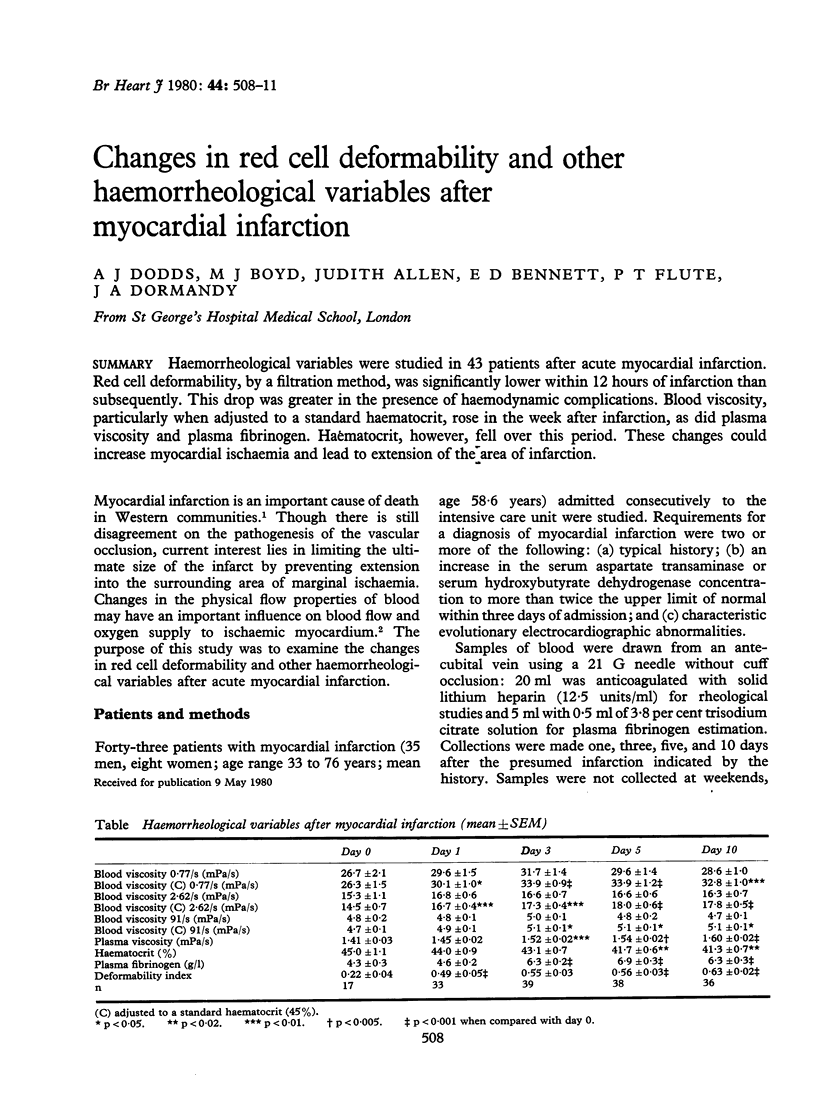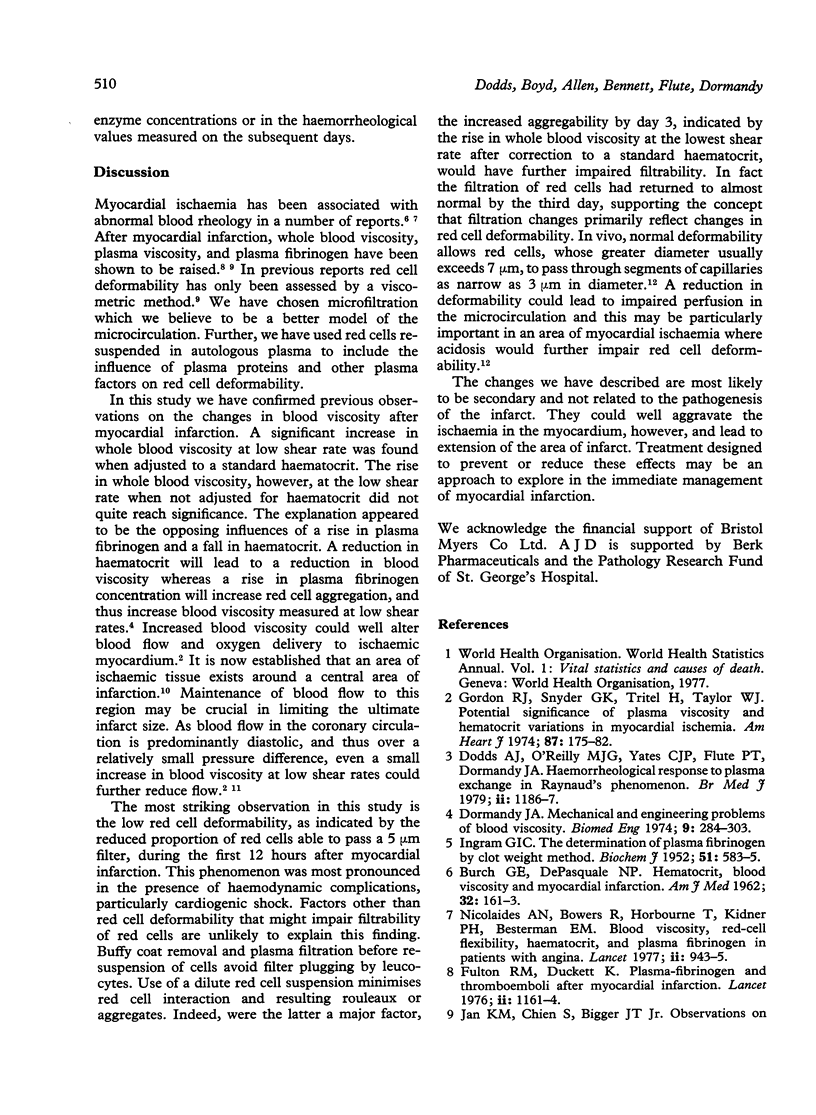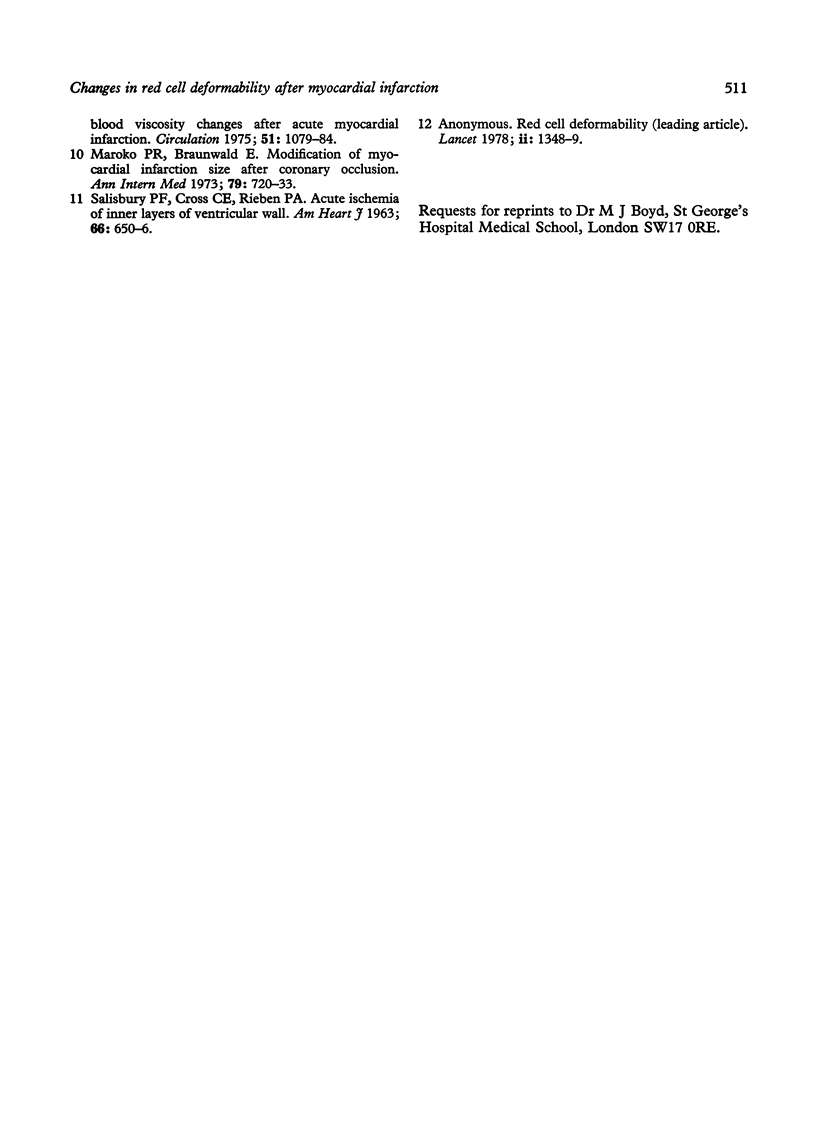Abstract
Haemorrheological variables were studied in 43 patients after acute myocardial infarction. Red cell deformability, by a filtration method, was significantly lower within 12 hours of infarction than subsequently. This drop was greater in the presence of haemodynamic complications. Blood viscosity, particularly when adjusted to a standard haematocrit, rose in the week after infarction, as did plasma viscosity and plasma fibrinogen. Haematocrit, however, fell over this period. These changes could increase myocardial ischaemia and lead to extension of the area of infarction.
Full text
PDF



Selected References
These references are in PubMed. This may not be the complete list of references from this article.
- Dodds A. J., O'Reilly M. J., Yates C. J., Cotton L. T., Flute P. T., Dormandy J. A. Haemorrheological response to plasma exchange in Raynaud's syndrome. Br Med J. 1979 Nov 10;2(6199):1186–1187. doi: 10.1136/bmj.2.6199.1186. [DOI] [PMC free article] [PubMed] [Google Scholar]
- Dormandy J. A. Medical and engineering problems of blood viscosity. Biomed Eng. 1974 Jul;9(7):284–passimass. [PubMed] [Google Scholar]
- Fulton R. M., Duckett K. Plasma-fibrinogen and thromboemboli after myocardial infarction. Lancet. 1976 Nov 27;2(7996):1161–1164. doi: 10.1016/s0140-6736(76)91680-9. [DOI] [PubMed] [Google Scholar]
- Gordon R. J., Snyder G. K., Tritel H., Taylor W. J. Potential significance of plasma viscosity and hematocrit variations in myocardial ischemia. Am Heart J. 1974 Feb;87(2):175–182. doi: 10.1016/0002-8703(74)90038-6. [DOI] [PubMed] [Google Scholar]
- INGRAM I. C. The determination of plasma fibrinogen by the clot-weight method. Biochem J. 1952 Aug;51(5):583–585. doi: 10.1042/bj0510583. [DOI] [PMC free article] [PubMed] [Google Scholar]
- Jan K. M., Chien S., Bigger J. T., Jr Observations on blood viscosity changes after acute myocardial infarction. Circulation. 1975 Jun;51(6):1079–1084. doi: 10.1161/01.cir.51.6.1079. [DOI] [PubMed] [Google Scholar]
- Maroko P. R., Braunwald E. Modification of myocardial infarction size after coronary occlusion. Ann Intern Med. 1973 Nov;79(5):720–733. doi: 10.7326/0003-4819-79-5-720. [DOI] [PubMed] [Google Scholar]
- Nicolaides A. N., Horbourne T., Bowers R., Kidner P. H., Besterman E. M. Blood viscosity, red-cell flexibility, haematocrit, and plasma-fibrinogen in patients with angina. Lancet. 1977 Nov 5;2(8045):943–945. doi: 10.1016/s0140-6736(77)90886-8. [DOI] [PubMed] [Google Scholar]
- SALISBURY P. F., CROSS C. E., RIEBEN P. A. ACUTE ISCHEMIA OF INNER LAYERS OF VENTRICULAR WALL. Am Heart J. 1963 Nov;66:650–656. doi: 10.1016/0002-8703(63)90321-1. [DOI] [PubMed] [Google Scholar]


